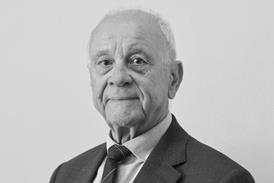There’s more to overseas conferences than golf and suntans. Michael Latham tells us what really goes on.
Although it took place nearly five months ago, the ECA conference in Vilamoura, Portugal is worth revisiting. The details of the conference and the installation of Tony Morgan as ECA president have been covered (EMC, June, p15-17). My thoughts today revolve around wider issues.
Why have a conference in Portugal at all? Not all ECA members can afford to go there or spare the time. It was noticeable that the centenary conference in Stratford-upon-Avon in 2001 had a much higher attendance. However, I believe that the organisers are right to choose a hotel overseas.
Because of the travelling and distance the vast majority of delegates will go for the whole conference, not just one day. A valid comparison is with the HVCA centenary conference held in Harrogate in June. Due to business commitments I was only able to attend for dinner on Wednesday 9 June and the opening session of the conference on Thursday morning. That was useful and pleasant but I could not absorb the whole conference spirit, which continued until Saturday.
The ECA’s format is clear. The delegates arrive on Saturday; Sunday, Monday and Tuesday mornings are solid conference sessions. These sessions are well attended, with excellent speakers and presentations. There is a social conference dinner on the Sunday evening and a gala dinner on the Tuesday. On the Wednesday morning many delegates fly home, while others stay on for golf and tennis tournaments.
You might think that sounds a pretty light workload. Actually, the time is profitably used. I held informal meetings of the chair’s advisers and other members of the management committee of the Joint Industry Board (JIB) outside the conference sessions. We made some important decisions together, for later ratification by the whole management committee at our next meeting in London.
As Andrew Wolstenholme, projects director at Heathrow Terminal 5, was a major speaker at the conference and raised some concerns with me, I was able to discuss them with the employers’ co-ordinator in the Major Projects Agreement Forum, George Ashcroft, and Amicus co-ordinator Paul Corby, both of whom were heavily involved in the conference.
The main benefit was having three days...to sort out many issues behind the scenes while concentrating solely on m&e business
On the Monday evening we held a well attended dinner organised by JIB chief executive Ron Allender in a local restaurant. At this, present and former JIB members and their partners were able to mix socially and do business. We were also able to make a retirement present to Michael Goodwin, who was coming to the end of his career as chief executive of SELECT, the Scottish JIB, and as a member of the MPA Forum.
The restaurants around Vilamoura saw some private negotiations between the parties to the JIB and myself to resolve some other tricky issues. These were satisfactorily smoothed over with a bottle of wine.
It certainly was not a ‘jolly’. The weather was miserable so I never sat on a lilo by the pool once. My wife and I did go for healthy seaside walks in the afternoon. Occasionally we lunched alone, but usually with other delegates. One benefit was having three days with my electrical colleagues to sort out many issues behind the scenes while concentrating solely on m&e business. I can’t normally do this because of other demands on my time from my varied interests in construction outside the m&e sector.
A vital theme of the conference was well articulated by Tony Morgan in his presidential address. He rightly stressed that most ECA members are small and medium-sized firms (SMEs). The Joint Major Contractors Group represents large m&e firms carrying out extremely big projects directly for clients or in partnership with substantial construction firms. Such organisations are the exception rather than the rule. Most firms are small, usually family owned, with the proprietor working on site or engaged full-time in buying equipment or finding more work.
The needs and staffing arrangements of SMEs are quite different to those of large contractors, for whom they often work. But they have one vital requirement in common – they both need paying on time. The ECA and HVCA both have vital roles to play in stressing that commercial necessity.
Source
Electrical and Mechanical Contractor
Postscript
Sir Michael Latham is chair of the Joint Industry Board and the ECA/HVCA Joint Major Contractors Group.

















No comments yet